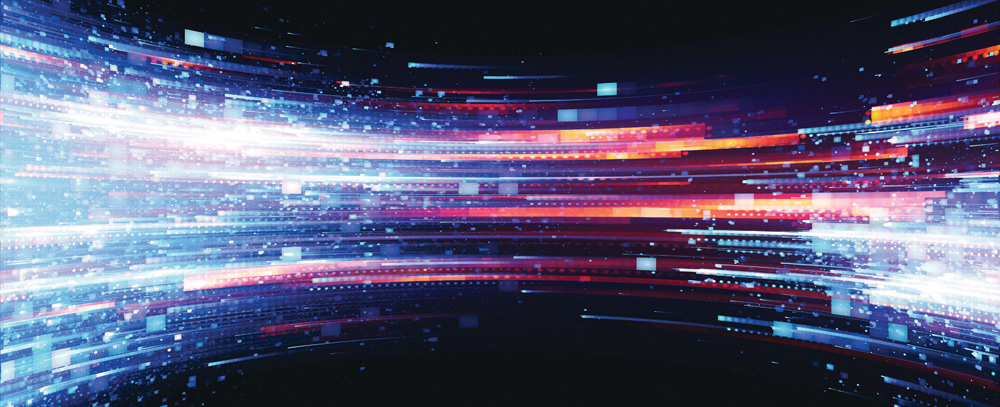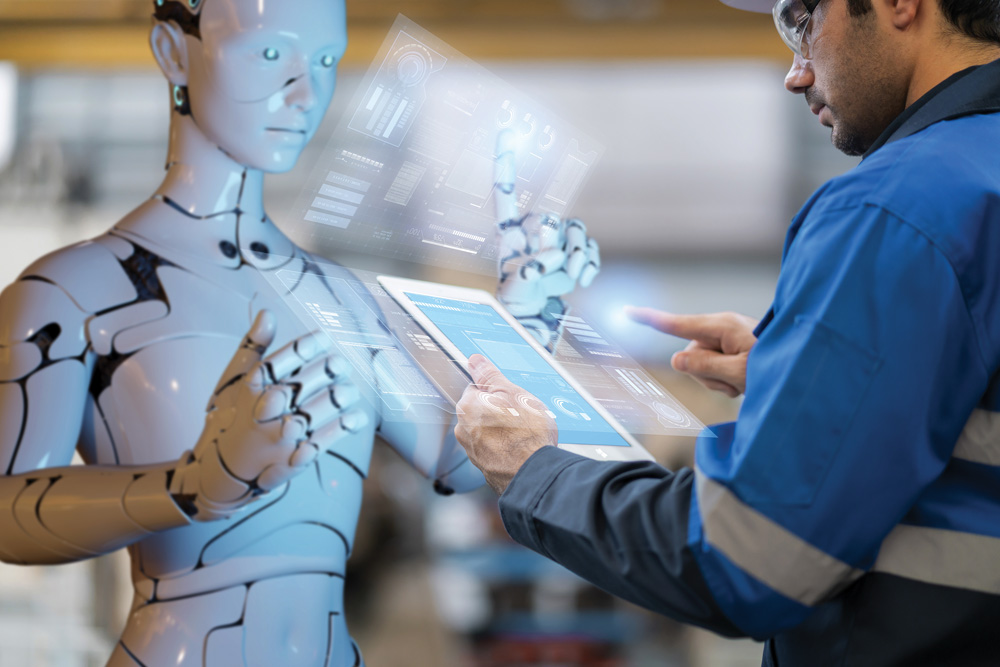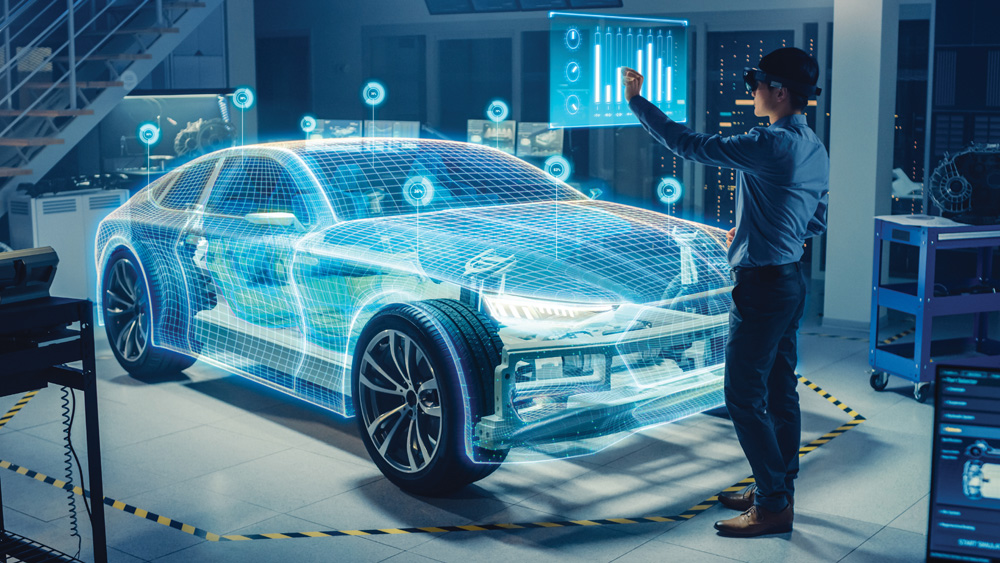
Factory of the future
Mario Cywinski
Innovation & Technology Aerospace Automotive Electronics Food & Beverage Manufacturing canadian manufacturing COVID-19 factory of the future future future of manufacturing Innovation manufacturing Operations TechnologyPLANT spoke with Richard Kunst, President and CEO, and Mariela Castaño, Senior Vice-President and COO, at Kunst Solutions, about the factory of the future, focusing on various trends, technologies and automation.

Photo © rybindmitriy / Adobe Stock
As manufacturers continue to recover in the face of COVID-19, they are exploring new ways to innovate and bounce back, changing the future of Canadian manufacturing forever.
Manufacturers are still investing in and adopting advanced technologies to optimize processes, improve operations, and create new products for the marketplace. In this Q&A, Kunst and Castaño give us an insight on what the future of manufacturing might look like.
Kunst has over 45 years of senior leadership experience in manufacturing, operations, retail, and supply chain. He was previously the President of the Canadian Region for the Association for Manufacturing Excellence, and is a regular contributor to PLANT magazine.
Castaño is an industrial engineer by trade. She has over 35 years of experience in operations, manufacturing, and continuous improvement. She is a Six Sigma Black Belt with a passion for “working with less” and a sharp eye for waste reduction.
PLANT: Do you believe that the factory of the future is already here?
Kunst: The answer is yes, and no. The factory of the future is like trying to chase the horizon; you think you’re getting close, and all of a sudden, it shifts.
We have grandiose visions that the factory of the future is a gleaming, huge enterprise filled to the brim with automation. However, seeing a bit of divergence, especially through COVID-19, as the technology of communication exponentially improved, not only in the quality, but in acceptance by society. We’re seeing a lot of craft businesses that are being competitive. If you look at beer brewing industry, before it was dominated by the large breweries, today, everywhere you have a craft brewer competing with the big breweries, and there’s only a fixed market of beer consumption out there.
The factory of the future, I don’t think it’s been clearly defined. In North America, our factory of the future is primarily there to compete against the intrusion of low-cost country entries. Over time, we have allowed some critical infrastructure businesses to evaporate from our landscape. People are starting to acknowledge that factory of the future is here. As the technology comes, we’re going to embrace it and it’s going to be increments of continuous improvement.

Photo ©DIgilife / Adobe Stock
Castaño: I will add that the plant of the future has always been in the making. Often, we see projects in the pipeline that have a status and have not moved forward, because they’re going too fast. The customers are not ready for it. Maybe their equipment manufacturers don’t have the technology that they need to bring this particular strategic move to realization. What been missing in the deployment to that future is the proper supply chain, and having the proper education between those manufacturers and
the customers.
Kunst: As we saw COVID-19 impact our daily lives, we started to see other emerging trends. If you go to the grocery store today, I’m now competing in the aisles with order pickers, and other delivery services where people are doing online ordering. I’m not seeing a lot of warehouses going up, but a lot of organizations are using their existing bricks and mortar as their local regional distribution centre to pick orders.
Society is saying, “I’m not willing to wait 24 hours to get my order, how am I going to get it right now within an hour or two,” which is becoming a competitor to Amazon. Amazon’s highly automated, very sophisticated, large warehousing operations are competing against the grocery chains, with order pickers walking the aisles, picking orders using their smartphones, to satisfy that customer demand within a couple hours.
Castaño: If you think about communication, for example, if we wanted to talk to people around the world, a conference call was the way to go. However, what if we can meet on site, that’s even better. When COVID -19 came along, suddenly, using a video camera and having a video call became easier, and accepted. People who did not want it, are now on board.
What was thought to take 10 years for people to adapt , has taken a month for people to digest, and in the span of about a month and a half, people absorbed what some thought would take 10 years to absorb. COVID-19 has put a huge spin on manufacturing, but also on how people are seeing businesses, and how they are seeing the customer and trying to understand the customer needs.
PLANT: Automation is at or near the top of most trends lists. How do you see it impacting the factory of the future now and going forward?
Kunst: There are different facets of automation that we have to take into consideration. We are in unprecedented times, data mining is at an exceptional high point, which is driving automated algorithms. They are capturing our personal profiles and customizing that solution. Looking at the production of widgets, we’re seeing that high degree of automation, increased robotics, end of arm tooling, design and capability. Before, you were using three-axis robots, those are now antiquated. Now, everyone is going to a five-axis robot. We’re seeing the evolution of wearable, automated technologies, creating a new specter of opportunity within the organization.
If we look at order entry, with COVID-19 not allowing us to touch anything, there are QR codes when you go to a restaurant, you scan your phone, see the menu and order it online. It’s automated directly into the kitchen and the food comes out. Therefore, automation has many layers.
Castaño:With information there is also a lot of complexity and with a lot of data generated, if that complexity is not managed properly at the operational level, it is going to be overwhelming to the organization, and is going to become very expensive to the point that some people will not be able to manage their business efficiently.
There are millions of data points to which a piece of software can make decisions, but the people behind it need to manage those decisions, the people that need to manage behaviour, their organizations sometimes are not keeping up with the pace. You make a big investment in automation, but if you don’t have the right systems behind it, that automation is going to fail you. In some instances, it’s going way too fast for some organizations, as they have no way of defining that future. What is the future state for every organization? Not everyone can afford those big, very complex technologies, or have the proper systems in place to deal with them.

Photo © rGorodenkoff / Adobe Stock
Kunst: Recently, we had the opportunity to talk to a lead engineer with an automotive company. The brand was always considered a premium brand; with advanced technology that they could put into their vehicles. They said three to four years ago, they typically felt that based on their investment in R&D, they were on average, six to 10 years ahead of their closest competitor from a technical expertise. Today, they are lucky if they are one to two years ahead.
If you start taking a look at motor vehicle production today, quality is no longer a differentiator, no matter what level of automobile you’re buying, you’re pretty well guaranteed many miles out of the product. When you take a look at the features in the broad spectrum, there’s very little differentiator between a high-end vehicle and an entry level vehicle. Therefore, it’s interesting to see where that level of automation is going, and how accepting people are of that automation, and how affordable it’s becoming.
PLANT: Do you see any other technologies emerging in the near future that we haven’t discussed yet?
Kunst: What we’re seeing with drone deliveries, at this point, it looks like a toy. However, what starts off as a toy can have merit. I think autonomous vehicles, and the issue of labour shortage is going to impact industry quicker and harder than we anticipate. We have a huge mass of our current working population scheduled to retire. So autonomous vehicles will fill that void out of necessity. Some people although are going to extend their working careers, which is going to dull that transition.
The issue that we have when we talk about people, is the intellectual requirement that we’re seeking of our operators and technical capability that our operators have is increasing at such a rapid rate. I don’t know how we’re going to train people to absorb this technology. What we’re seeing is we’re complementing it. It’s like wearable technology.
One of the areas that we’re seeing a huge indent is in wiring. Particularly, in automotive wiring, there are miles of wire in a motor vehicle. Try and memorize how to put a wire harness together, how to thread the wire through the door of a vehicle, or through the engine compartment of a vehicle. I can virtually take an operator, put a wearable face shield on them and just say follow the instructions and the artificial intelligence knows where the operators located, tells them what kind of wire to pick up, how to thread it, etc.
Therefore, I don’t have to train that operator. I’m not looking necessarily for a highly skilled operator, yet, if something goes wrong, that operator still has to be very quick to problem solve. We’re seeing the same in how we build reliability into a lot of the emerging technology and I think that’s going to be a little bit of our impediment.
Just as at the supermarkets, we’re seeing people go with carts, you’re picking four to eight orders concurrently, as they go through, as the as the picklist is merged. Automation is definitely going to come in almost like a vending machine; you punch it in, I want that particular candy bar, and boom, it’ll come in a box and will be shipped to you within minutes.
Castaño: The other technology that I feel is going to have a very strong play is nanotechnology., compacting more in any smaller footprint. If you look at TVs, for example, they are now almost as thin as a piece of paper. Look at the physical space that a TV used to take in a warehouse, versus now, where you can pack like 10 TVs where it used to take the space of one TV. I think that nanotechnology is going to be the future of manufacturing.
Kunst: Along with 3D printing, because I can now send a part electronically to a 3D printer anywhere in the world, so my logistics problem starts to go away. Have I got the durability, capability in a 3D printed product? I think the evolution of the materials used in 3D printing is another frontier that’s coming very quickly.
_____________
Mario Cywinski is the Editor of PLANT magazine, Machinery and Equipment MRO magazine and Food and Beverage magazine, a member of the Automobile Journalists Association of Canada.
